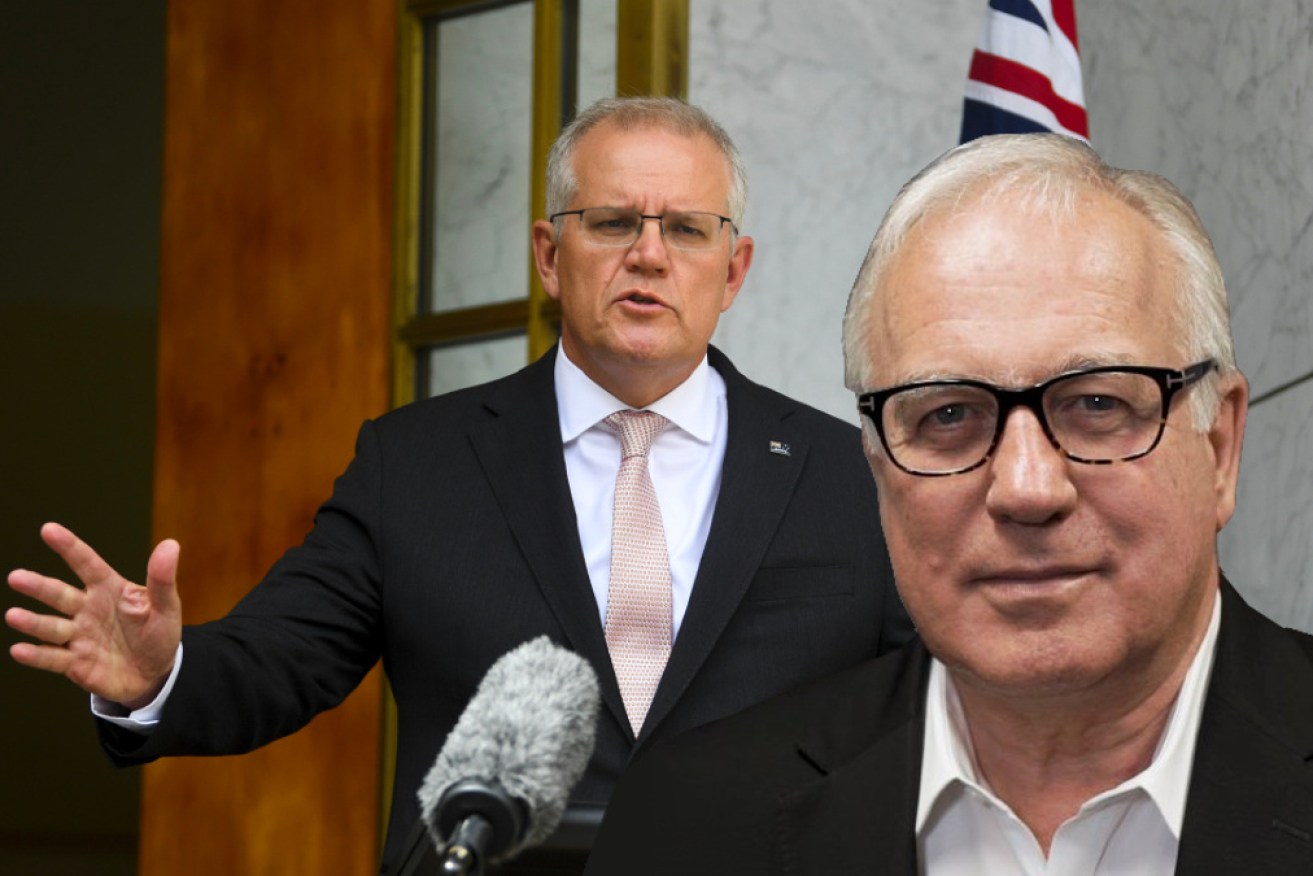Alan Kohler: Oh Lord make us fiscally chaste, but not yet, says Morrison


The Coalition government spends much more than it lets on. Photo: TND/AAP
The Prime Minister’s speech to the Australian Financial Review’s business summit last week was a classic of having it both ways, of saying one thing and then immediately saying the opposite.
He declared that he’s “never been caught up in the hoopla” of President Biden’s “Build Back Better” set of ideas and policies which, he said, try to “replace our market-based, business-led growth economic system, with a government-centred reimagination of global capitalism”.
Then, straight-faced, he listed all the things his government is doing to build Australia back better, and it was quite a lot – most of the speech, in fact.
It was a case of Hayek then Hobbes, Ronald Reagan then Lyndon Johnson, and the central question for the 2022 election is whether Scott Morrison can pull off this feat of sophistry.
That is, can he and Treasurer Josh Frydenberg continue to spout conservative small government theology while presiding over the biggest government in living memory, getting bigger.
The age of big government
Government payments have averaged 26.5 per cent of GDP during eight years of Coalition government and were projected in December to be 27 per cent over the next two years. During the previous Labor government, payments averaged 24.5 per cent of GDP.
It’s possible that booming commodity prices and lower-than-expected unemployment will lead to a smaller deficit than projected, but government spending will have to increase a lot more than projected. There will be no choice.
If the Coalition can’t convincingly posture as small-government conservatives while doing the opposite, as will be needed now, there is no point to them – we might as well as have a Labor government that is supposed to lean into big government (whether or not they actually do it).
We’re living in an age of spin, where marketing conceals reality, especially during election campaigns, but it will be wonderful to watch the contortions of the Coalition as they adjust their conservative branding to fit the new demands on government spending.
There are three main things clamouring for more money: Defence, climate change and aged care.
Budget pressure
Defence spending is currently 2.1 per cent of GDP; during the Cold War it rose to 3.2 per cent.
Getting it back to 3 per cent in the new cold war confronting us would cost an extra $20 billion a year, but it looks like the invoice presented by Vladimir Putin’s invasion of Ukraine and China’s support of him will be much more than that.
On Thursday, Morrison announced that the government would spend an additional $38 billion to lift permanent military staffing by 30 per cent, to 80,000 by 2040. If you include public servants staffing it goes to 110,000 – an extra 18,500 people over what was previously planned.
On top of that, the government is committed to spending $575 billion on new defence equipment over the next eight years. Annual spending by then will be $74 billion, up from $42 billion.
How much climate change will cost, both to reduce emissions and deal with the weather extremes already resulting from it, is anybody’s guess.
A market-based emissions trading scheme would put far less burden on the federal budget, but the Coalition has ruled against the market in favour of using taxpayers’ money to buy emission reductions.
On that basis, achieving the promised net zero by 2050 will be very expensive.
Meanwhile, as discussed here a week ago, the cost and non-availability of insurance is going to be such that unless the government spends huge amounts of money building levees, reinforcing coastal walls, reducing fuel for bushfires and other adaption measures, large parts of Australia will have to be abandoned or inhabited uninsured.
And that becomes a cost to the budget as well, since uninsured businesses and families would have to be bailed out at some point.
Don’t forget the vote-buying
As for aged care, the cheapest cost of the royal commission’s recommendations to fix the neglect and abuse, and make the system work as it should, is estimated to be an extra $9 billion a year, from $27 billion to $36 billion.
The royal commission noted that Australia spends 1.2 per cent of GDP on aged care compared to 2.5 per cent in other similar countries.
If Australia’s aged-care budget met that standard, it would be an extra $27 billion a year.
It’s not hard to come up with more than $100 billion in extra spending on defence, climate change and aged care, which would take government spending to 34 per cent of GDP – close to twice the size of the government (as a proportion of GDP) that Gough Whitlam bequeathed to Malcolm Fraser in 1975.
And that’s before we consider that this will be a pre-election budget.
The last pre-election budget in 2019 contained $10.4 billion in new spending to buy votes.
This time the Prime Minister is twice as unpopular as he was then, so we can probably double that.
In last week’s speech, Scott Morrison said: “we are now normalising our fiscal settings,” but he did not put a time on that.
As St Augustine is supposed to have prayed: “Oh Lord, grant me chastity, but not yet.”
Alan Kohler writes twice a week for The New Daily. He is also editor in chief of Eureka Report and finance presenter on ABC news








